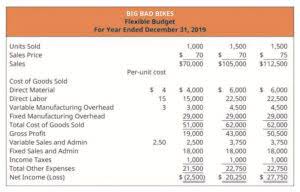
The equity multiplier is found by dividing a company’s total assets by total shareholder equity. Generally, a high equity multiplier demonstrates that a company is utilizing a high amount of debt to finance assets. Companies that adopt a strategy centered around minimising risk might aim to keep their equity multiplier low, indicating a reliance on equity capital rather than debt.

Role of Equity Multiplier in Corporate Sustainability
Every investor needs to look at other companies in similar industries and glance at different financial ratios to get a better idea of where each of them stands. Companies finance their acquisition of assets by giving equity or debt, or a mix of both. Also called owner’s equity, or simply ‘equity’, this figure is found in the same balance sheet under the ‘equity’ section. It comprises of the company’s retained earnings (profits that the company has chosen to reinvest), added to the money that has been invested by shareholders in return for shares. Essentially, it showcases the ownership capital available within the organization.
Equity Multiplier Formula
Banks are expected to maintain an appropriate balance between their debt and equity. Through this risk management lens, the equity multiplier becomes a useful tool for decision-making in various areas such as capital acquisition, resource allocation, and strategic planning. Moreover, it provides a form of financial checkup that enables companies to identify and mitigate potential risks before they become too severe. If a business fails to meet its financial obligations or file bankruptcy, it could damage its reputational equity. This, in turn, might affect its relationships with stakeholders, including investors, employees, and customers. The Equity Multiplier plays a vital role in projecting how extensively a corporation has availed credit to finance its assets; thus, it provides an insight into a company’s financial leverage.
Formula and Calculation of the Equity Multiplier
Apple is more susceptible to changing economic conditions or evolving industry standards than a utility or a traditional telecommunications firm. The equity multiplier is often compared with other financial ratios to provide a comprehensive view of a company’s financial health. Interpreting the equity multiplier requires an understanding of both the company’s industry and its financial strategy.
- The equity multiplier is a critical indicator of a company’s financial structure.
- A higher ratio means a larger portion of a company’s assets is funded by debt, implying higher financial risk.
- Exxon Mobil’s equity multiplier ratio of 2.37x suggests that the company uses a more balanced approach to financing its assets, with a higher proportion of equity compared to debt.
- In conclusion, the equity multiplier within the DuPont Analysis is a critical indicator of not just a company’s leverage, but also its financial stability.
- This increased use of debt, signified by a higher equity multiplier, can often lead to an increase in ROE.
What Is The Equity Multiplier Formula?

Think about Apple’s (AAPL) balance sheet toward the finish of the fiscal year 2019. The company’s total assets were $338.5 billion, and the book value of shareholder equity was $90.5 billion. The company’s equity multiplier was in this way 3.74 ($338.5 billion/$90.5 billion), a bit higher than its equity multiplier for 2018, which was 3.41. This equity multiplier calculator estimates the equity multiplier which is a measure of financial leverage of a company, as it demonstrates its ability to use debts for financing its assets.

Insurance companies with a high equity multiplier might have more financial leverage but at the same time pose a higher risk. Capital-intensive industries typically have higher equity multipliers due to their reliance on debt to finance large assets. Yes, a low equity multiplier can indicate that a company is less reliant on debt, which often suggests a more conservative financial strategy and lower financial risk. The equity multiplier is otherwise called the leverage ratio or financial leverage ratio and is one of three ratios utilized in the DuPont analysis. The equity multiplier is a risk indicator that measures the portion of a company’s assets that is financed by stockholder’s equity instead of by debt. It is calculated by separating a company’s total asset value assets = liabilities + equity by its total shareholders’ equity.
An organisation’s equity multiplier can be heavily influenced which one of these is equivalent in value to the equity multiplier? by its capital structure. The larger a company’s debt compared to its equity, the higher its equity multiplier will tend to be. On the flip side, companies with a lower reliance on debt in their capital structure will likely have a lower equity multiplier.
Managing Financial Leverage with the Equity Multiplier
The higher the value of the Equity Multiplier, the higher would be the financial leverage of the company. On the contrary, a low equity multiplier indicates that a company uses less debt relative to equity. Commonly, this might signify a conservative financial strategy, where a company prefers to finance its operations mainly through equity.

Analysts should be aware of these limitations and use the equity multiplier as part of a broader analytical framework. Because their assets are generally financed by debt, companies with high equity multipliers may be at risk of default. Yet, it could likewise signal that the company can’t tempt lenders to loan it money based on good conditions, which is a problem.